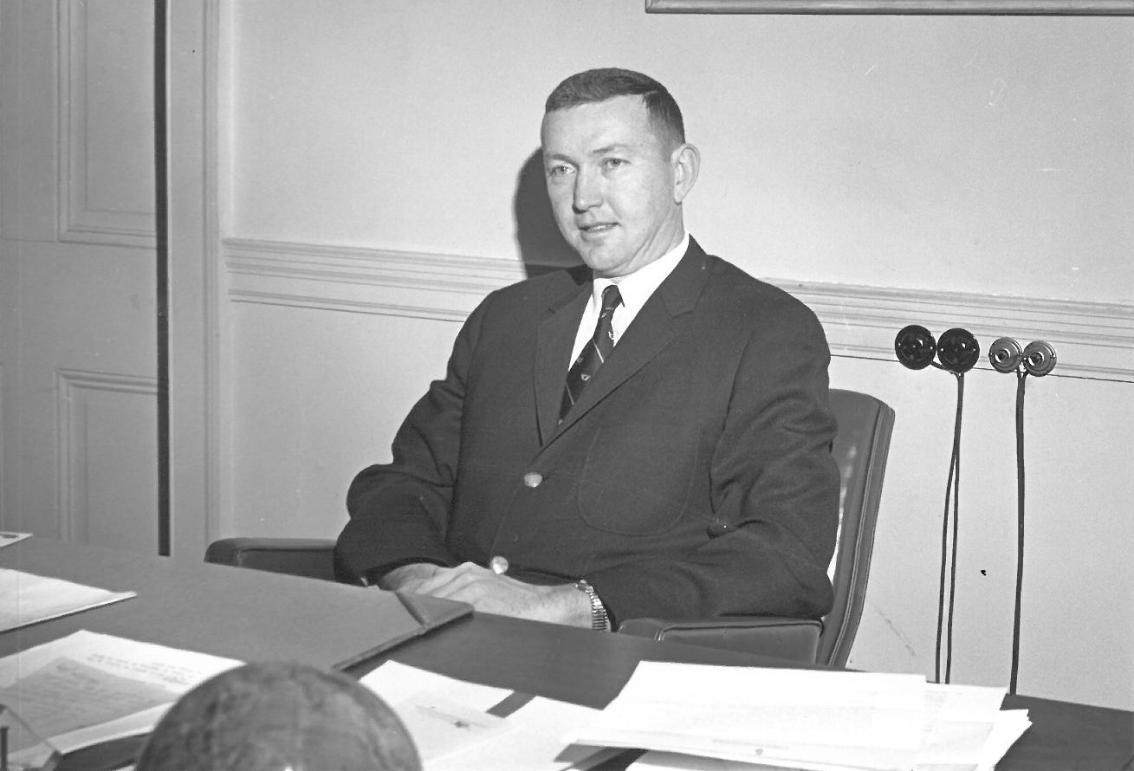

Longwood is honoring the memory of former President Dr. Henry I. Willett Jr., whose forward-looking and popular leadership during the turbulent 1960s and ’70s transformed the institution and lay its modern foundations.
President Willett passed away on November 11th, his family announced. He was 90.
It was during Willett’s 14-year tenure, 1967-1981, that Longwood marked several historic student body milestones in its development as a modern liberal arts university, including the integration of Black students in the early years of his presidency, and in 1976 Longwood’s full transition to co-education.
President Willett was a gifted and dedicated leader who guided Longwood through a challenging period in the life of the country and the Commonwealth with strength and grace.
President W. Taylor Reveley IV Tweet This
Despite the tumult of the era nationally, often marked by division along generational lines, Willett formed a strong bond with students, routinely stopping to converse with them on gregarious walks around campus. His relationship with the student body was exemplified by one April day in 1969: while many campuses around the country were embroiled in sometimes-violent protests, Longwood students held a surprise rally and demonstration on Wheeler Mall in support of their president. Wearing blue-and-white buttons reading “This Is Willett Country” and carrying banners proclaiming “Longwood Loves Willett,” more than a thousand students—over half the student body—demonstrated their affection in what the Richmond Times-Dispatch called “a kind of protest in reverse.”
Academically, Willett led Longwood through a major transition. Longwood had been a teacher’s college since 1884, when it became a public institution, and had retained that identity even as more broad-based programs were instituted. Under Willett’s leadership, Longwood became a fully comprehensive liberal arts college with a student body nearing 2,000. Longwood became a university in 2002, and today has more than 4,500 students.
In 2004, Longwood honored the former president by renaming a central campus building serving both athletics and academics Willett Hall. The building was the site of the 2016 U.S. Vice Presidential Debate.
During his tenure, Willett and his wife Mary also revitalized Longwood House, which had fallen into disuse and disrepair until they oversaw significant preservation efforts and made the historic home into the president’s house, raising their young family there.
“Henry was a very warm and engaging individual,” said close colleague and friend Dr. Carolyn Wells, former vice president for academic affairs at Longwood and a longtime biology professor. “He never met anyone he didn’t get along with, was very easy to work with, and had a vision of what the institution should become and was very skilled in seeing that through.”
“President Willett was a gifted and dedicated leader who guided Longwood through a challenging period in the life of the country and the Commonwealth with strength and grace,” said President W. Taylor Reveley IV. “He made possible the Longwood we know and love today, not just as a great, diverse and co-educational university, but also by laying foundations in athletics, the arts and other critical parts of campus life that have flourished and mark a powerful legacy. He was always generous with me with his wisdom and perspective, and good humor, for which I’m profoundly grateful.
“The Willetts are a wonderful family that has served the Commonwealth in countless ways through the generations, and our deepest condolences are with them now,” he said.
After earning his bachelor’s and master’s degrees from Washington & Lee University, Willett began his career teaching sixth grade in Martinsville, Virginia. A keen intellect and ambitious educator, he quickly moved into school administration, being named administrative assistant to the Norfolk superintendent within five years. In 1963, at just 32 years old, he became the Chesapeake school system’s assistant superintendent for instruction. While in the role, he earned a doctorate from the University of Virginia in 1967.
Willett was named the 20th Longwood president that same year. At 36 years old, he was the second-youngest person to assume the Longwood presidency, but his reputation preceded him to Farmville. Rector Angus Powell described Willett in those early days as “an outstanding educator who is recognized in educational circles for his demonstrated professional leadership and qualities of personal growth.”
In the first three years of his presidency, Longwood’s physical footprint expanded with several new buildings, including the McCorkle and Jeffers expansions to Stevens Hall, Wygal Hall to house the music program, and Bedford Hall to house the art and theatre programs. The twin residential high-rise towers were both opened by 1970, as was the J.P. Wynne Campus School. Structures erected later in his tenure included Coyner and Bristow Halls, and Lancer Hall, the gymnasium later renamed Willett Hall in his honor.
In keeping with his goal of making Longwood a more comprehensive institution, Willett led the founding of the Longwood Center for the Visual Arts in 1978, which houses the university’s art collection and is today one of only five percent of museums in the country accredited nationally by the American Alliance on Museums. He also instituted the ROTC program in 1971.
After stepping down from Longwood’s presidency in 1981, Willett joined the faculty at George Washington University, where he expanded the school’s educational leadership and administration program and helped lead it to national prominence.
In more than 20 years teaching in that role, Willett advised colleges and universities across the country on matters of education and the law, and contributed book chapters and essays in educational journals on navigating legal issues that frequently arise in the field. After retirement, he continued to serve George Washington University as professor emeritus.
He is survived by his wife, Mary, four sons, 12 grandchildren, and one great-grandchild.
